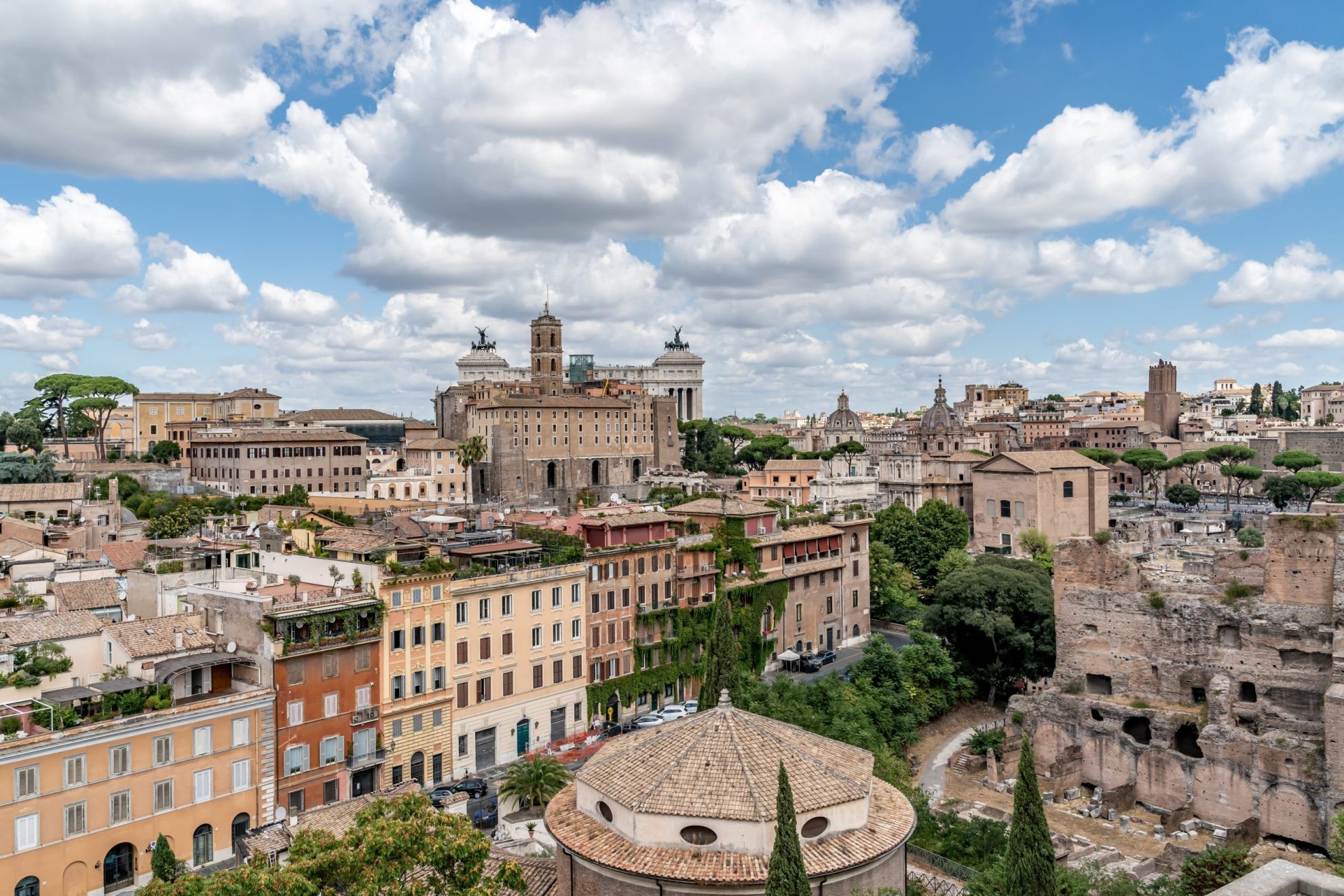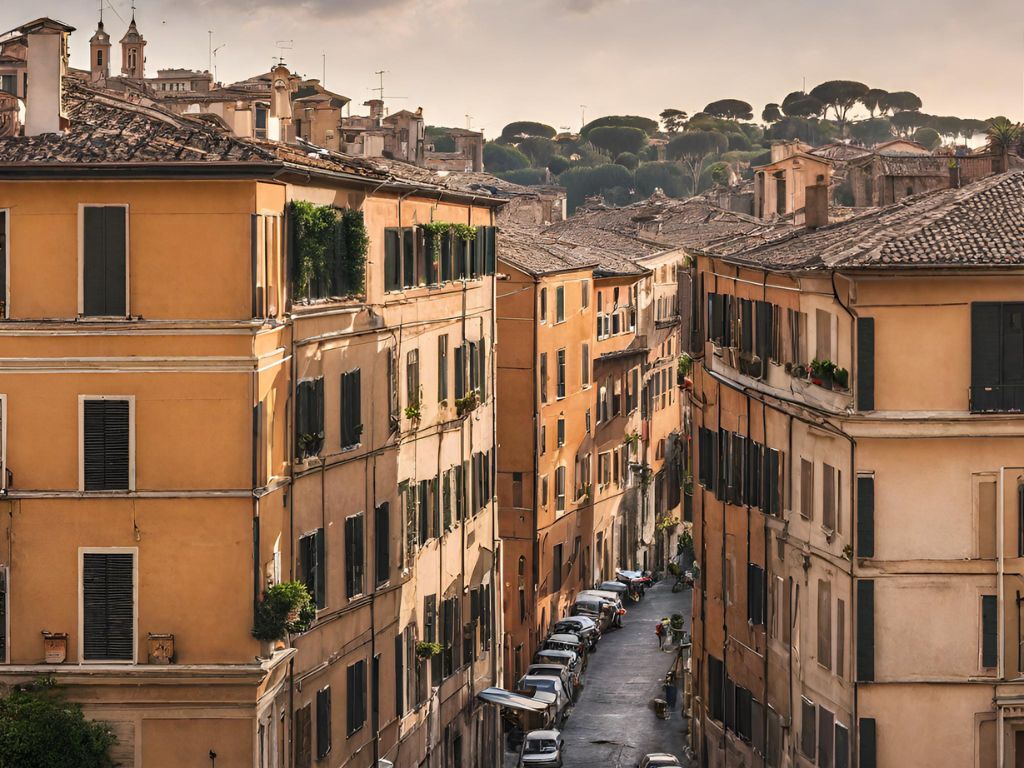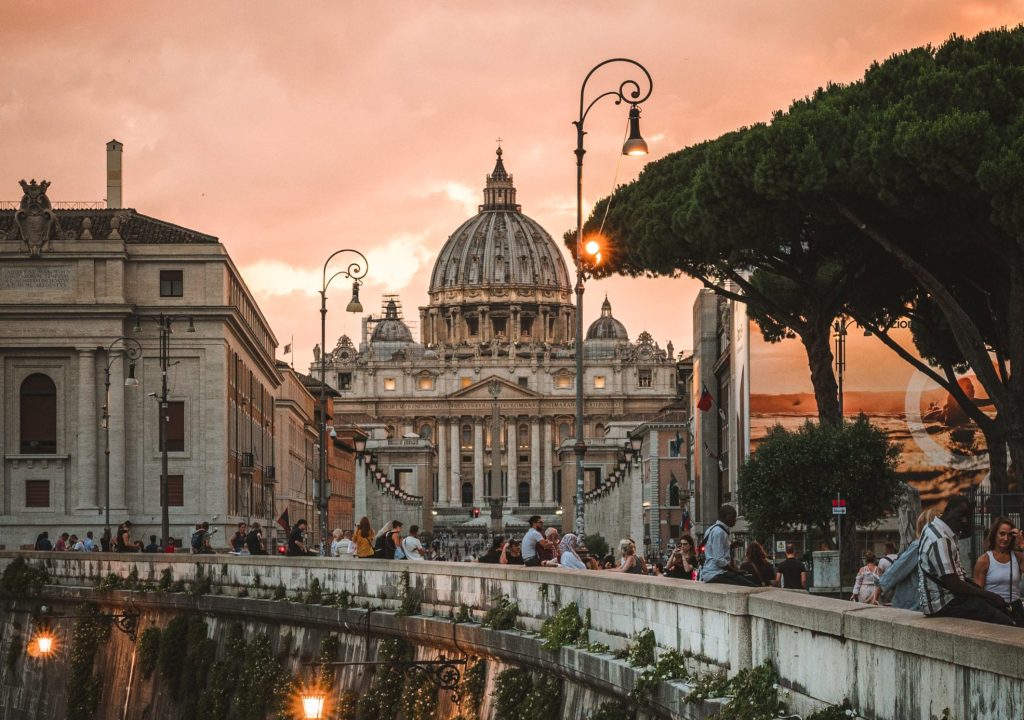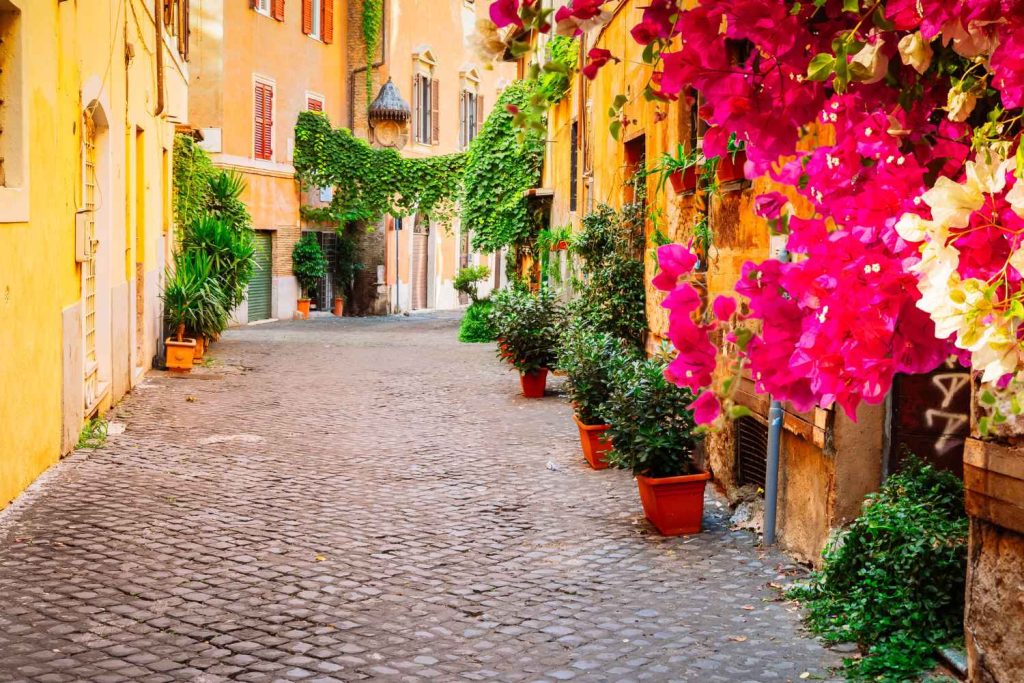Join us on a virtual journey as we explore this mesmerising historic site, an essential stop on any Rome itinerary
Located in the heart of the Eternal City of Rome, you’ll find a site saturated with history, legend, and unmatched beauty: the Palatine Hill. This ancient hill, one of the Seven Hills of Rome, is a treasure trove of archaeological wonders that transports you back in time to the very origins of the Roman Empire. As you ascend the Palatine Hill, you’ll find yourself immersed in the grandeur of imperial palaces, breathtaking vistas of the Roman Forum, and a palpable sense of history that permeates every stone.
A Prelude to History
To fully appreciate the magnificence of the Palatine Hill, one must understand its significance in Roman history. Legend has it that the hill was the birthplace of Rome itself, where Romulus, the city’s legendary founder, and his brother Remus, were nurtured by the she-wolf. This mythological connection to Rome’s beginnings sets the stage for the remarkable historical journey that awaits you.
Palatial Grandeur
As you ascend the cobblestone paths of the Palatine Hill, you’ll encounter the remains of opulent imperial palaces. The most notable among these is the Domus Augustana, the palace of Emperor Augustus. It’s an awe-inspiring example of Roman architecture and engineering prowess, with its well-preserved courtyards, frescoed walls, and intricate mosaic floors. Imagine strolling through the same halls where Augustus once held court, making decisions that would shape the destiny of an empire.
Nearby, the House of Livia provides a glimpse into the private life of Emperor Augustus and his wife Livia. You’ll marvel at the well-preserved frescoes that adorn the walls, depicting scenes from nature and mythology. These intricate artworks offer a rare window into the aesthetic sensibilities of ancient Rome.
A View to Remember
One of the most enchanting aspects of the Palatine Hill is the panoramic view it offers. As you reach the summit, you’ll be rewarded with a breathtaking vista of the Roman Forum, with its imposing columns, arches, and temples. The juxtaposition of ancient ruins against the backdrop of modern Rome is nothing short of magical. This vista alone makes the climb worthwhile, and it’s a photographer’s dream come true.
The House of Emperors
Walking through the sprawling remains of the imperial palaces, it’s impossible not to feel the weight of history. You’ll encounter the House of Tiberius, where the reclusive Emperor Tiberius spent his later years, away from the politics of Rome. The House of Flavia Domitilla, with its elegant peristyle and colonnaded courtyard, provides another glimpse into the opulent lifestyles of the Roman elite.
Gardens of Tranquility
Amidst the grandeur of the palaces, you’ll discover the tranquil Farnese Gardens. These lush green gardens are a welcome respite from the bustling city below. Strolling along the shaded pathways, you can admire the Renaissance-era sculptures that adorn the garden, including the famous Farnese Hercules. It’s a peaceful oasis where you can reflect on the history that surrounds you.
Archaeological Marvels
The Palatine Hill is also home to some of Rome’s most remarkable archaeological discoveries. The Lupercal, a cave traditionally believed to be the site where Romulus and Remus were nursed by the she-wolf, is a must-see. Although largely in ruins, the Lupercal is a tangible link to Rome’s legendary origins.
Another fascinating site is the House of the Griffins, named for the intricate gryphon mosaics that decorate its floors. These mosaics are a testament to the artistic prowess of the Romans and their attention to detail.
The Museum of the Palatine
To gain a deeper understanding of the artefacts and history of the Palatine Hill, a visit to the Palatine Museum is essential. Here, you’ll find an extensive collection of sculptures, frescoes, and archaeological finds from the hill and its surrounding areas. The museum provides context to the ancient ruins you’ll explore and offers a comprehensive overview of the hill’s historical significance.
A walking tour of The Palatine Hill in stunning 4k
Frequently Asked Questions about the Palatine Hill in Rome
What is the Palatine Hill, and where is it located?
While planning your visit, you can also explore a curated list of accommodations from TripAdvisor to ensure a comfortable and memorable stay in the Eternal City. (https://www.tripadvisor.com/HotelsNear-g187791-d190996-Palatine_Hill-Rome_Lazio.html)
More articles you might like...
All about Vatican City
Commonly Asked Rome Questions
Rome Accommodation
Rome Food and Drink
Rome History and Culture
Rome Neighbourhoods
Rome Tours and Must-See Attractions
Rome's Top Tours
Is the Palatine Hill accessible to the public?
More articles you might like...
All about Vatican City
Commonly Asked Rome Questions
Rome Accommodation
Rome Food and Drink
Rome History and Culture
Rome Neighbourhoods
Rome Tours and Must-See Attractions
Rome's Top Tours
What are the main attractions on the Palatine Hill?
More articles you might like...
All about Vatican City
Commonly Asked Rome Questions
Rome Accommodation
Rome Food and Drink
Rome History and Culture
Rome Neighbourhoods
Rome Tours and Must-See Attractions
Rome's Top Tours
Can I take guided tours of the Palatine Hill?
This personalized experience will offer a deeper understanding of these iconic Roman landmarks.
More articles you might like...
All about Vatican City
Commonly Asked Rome Questions
Rome Accommodation
Rome Food and Drink
Rome History and Culture
Rome Neighbourhoods
Rome Tours and Must-See Attractions
Rome's Top Tours
Is there a fee to enter the Palatine Hill?
More articles you might like...
All about Vatican City
Commonly Asked Rome Questions
Rome Accommodation
Rome Food and Drink
Rome History and Culture
Rome Neighbourhoods
Rome Tours and Must-See Attractions
Rome's Top Tours
How long should I plan to spend exploring the Palatine Hill?
More articles you might like...
All about Vatican City
Commonly Asked Rome Questions
Rome Accommodation
Rome Food and Drink
Rome History and Culture
Rome Neighbourhoods
Rome Tours and Must-See Attractions
Rome's Top Tours
Are there any restrictions on what I can bring to the Palatine Hill?
More articles you might like...
All about Vatican City
Commonly Asked Rome Questions
Rome Accommodation
Rome Food and Drink
Rome History and Culture
Rome Neighbourhoods
Rome Tours and Must-See Attractions
Rome's Top Tours
Is the Palatine Hill wheelchair-accessible?
More articles you might like...
All about Vatican City
Commonly Asked Rome Questions
Rome Accommodation
Rome Food and Drink
Rome History and Culture
Rome Neighbourhoods
Rome Tours and Must-See Attractions
Rome's Top Tours
Are there any special events or festivals held at the Palatine Hill?
More articles you might like...
All about Vatican City
Commonly Asked Rome Questions
Rome Accommodation
Rome Food and Drink
Rome History and Culture
Rome Neighbourhoods
Rome Tours and Must-See Attractions
Rome's Top Tours
Can I take photographs at the Palatine Hill?
More articles you might like...
All about Vatican City
Commonly Asked Rome Questions
Rome Accommodation
Rome Food and Drink
Rome History and Culture
Rome Neighbourhoods
Rome Tours and Must-See Attractions
Rome's Top Tours
In the heart of Rome, the Palatine Hill stands as a testament to the enduring power of ancient history. Its imperial palaces, breathtaking vistas, and archaeological treasures combine to create an unforgettable experience for visitors. As you walk in the footsteps of emperors and legends, you can’t help but be captivated by the rich tapestry of Rome’s past.
The Palatine Hill is a place where the past comes alive, where you can feel the heartbeat of an empire that once ruled the known world. It’s a destination that not only ignites your imagination but also deepens your appreciation for the enduring legacy of Rome. So, when you find yourself in the Eternal City, make sure to carve out time for a journey back in time to the Palatine Hill – a place where history breathes and whispers its secrets to those who listen.
Here are some great Palatine Hill tour ideas
More articles you might like...
You can find more great Rome content in the following categories;
All about Vatican City Commonly Asked Rome Questions Rome Accommodation Rome Food and Drink Rome History and Culture Rome Neighbourhoods Rome Tours and Must-See Attractions Rome's Top Tours






